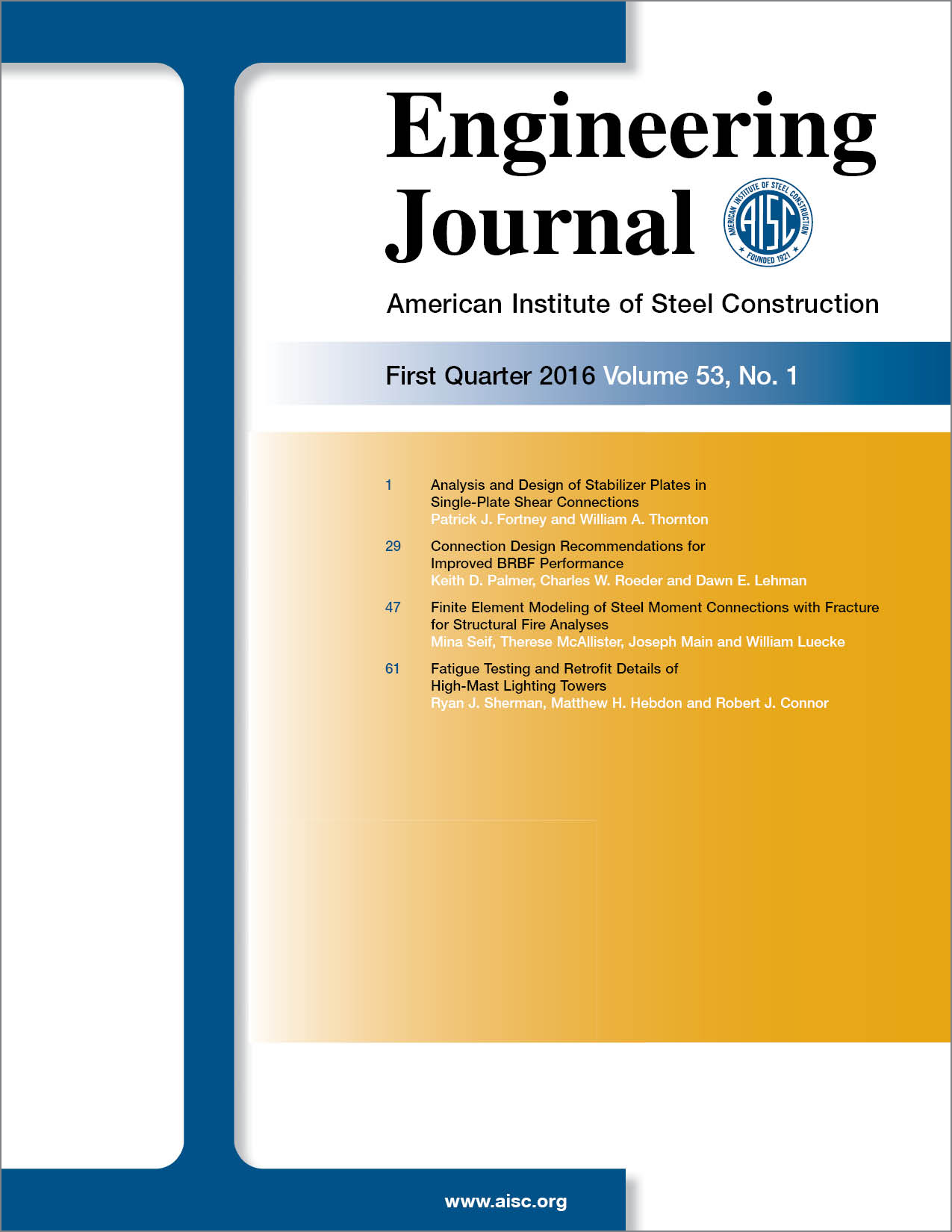Fatigue Testing and Retrofit Details of High-Mast Lighting Towers
DOI:
https://doi.org/10.62913/engj.v53i1.1092Keywords:
high-mast lighting tower (HLMT), fatigue, retrofit, sign structureAbstract
Fatigue cracking has been the cause of a number of high-mast lighting tower (HMLT) failures throughout the United States. In almost every case, forensic evaluations have shown cracking initiates and propagates due to wind-induced fatigue at mainly the base plate–to–tube wall connection detail or the hand-hole weld detail. Simply replacing the towers is not an economically feasible alternative because thousands of HMLTs are in use along major highways across the United States. As a result, strategies to retrofit existing HMLTs are needed. Results from laboratory testing performed on two HMLT retrofit configurations are presented. The retrofit strategies are employed without removing the pole from the foundation using simple bolting techniques and moderately skilled labor, providing cost savings for owners and increasing safety for the motoring public.

